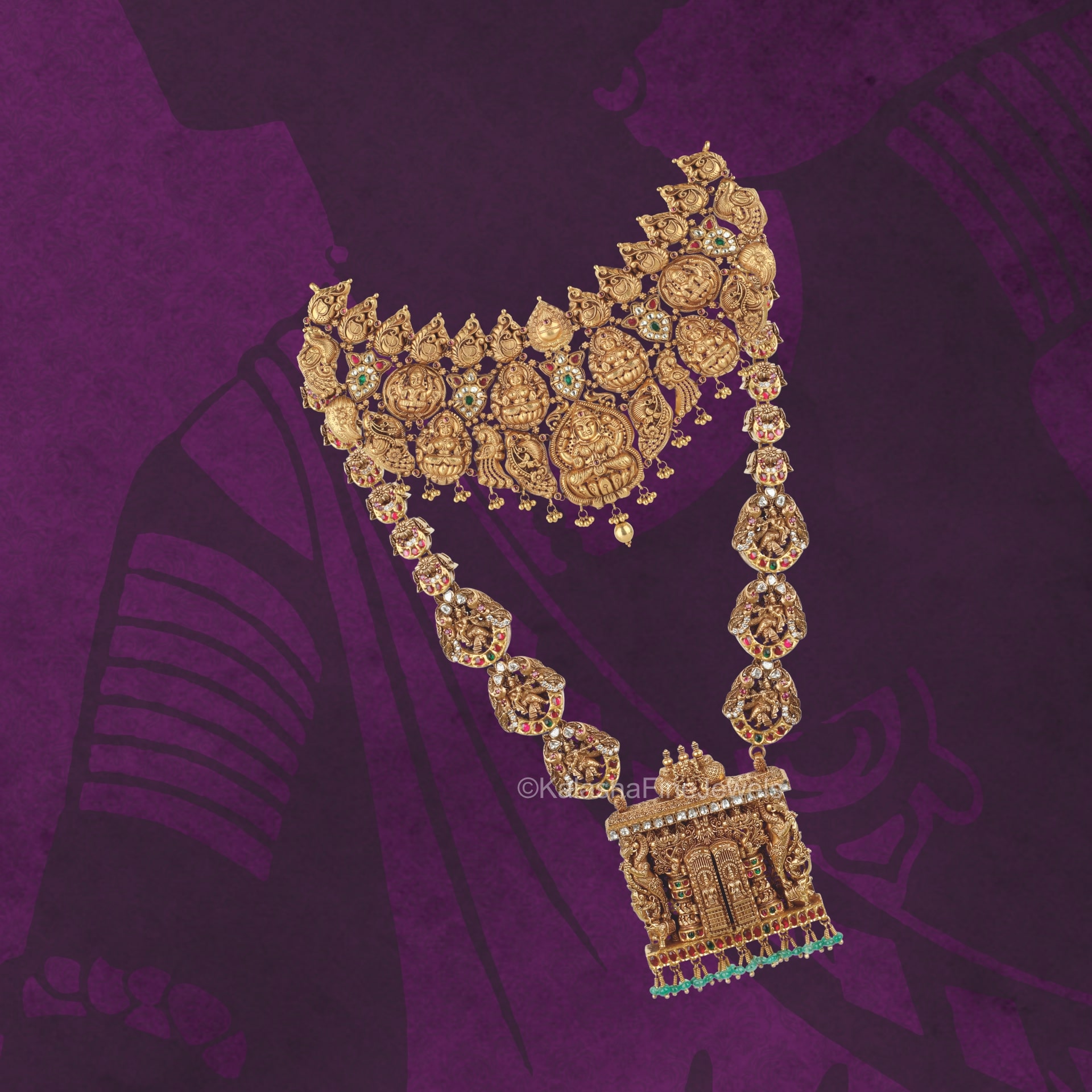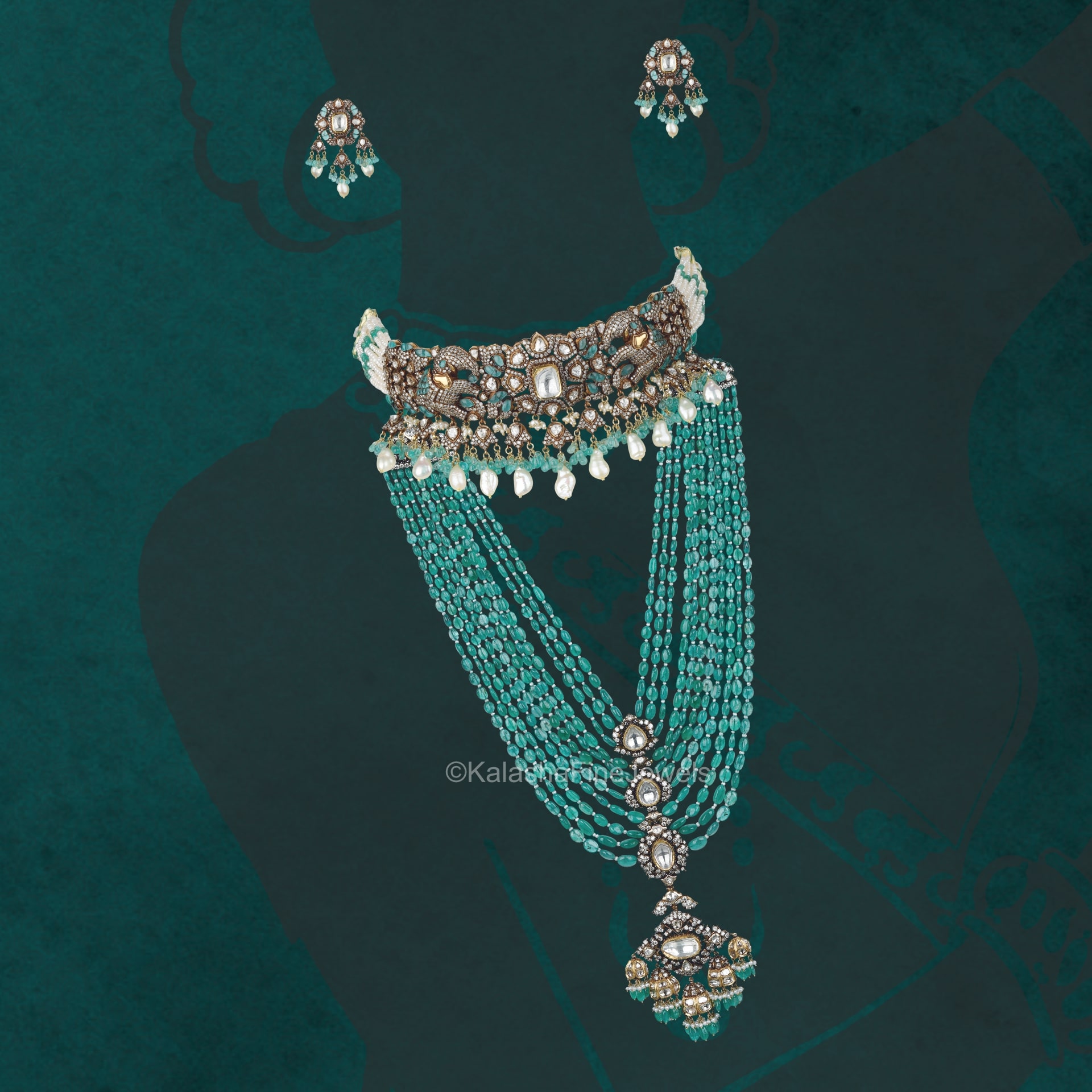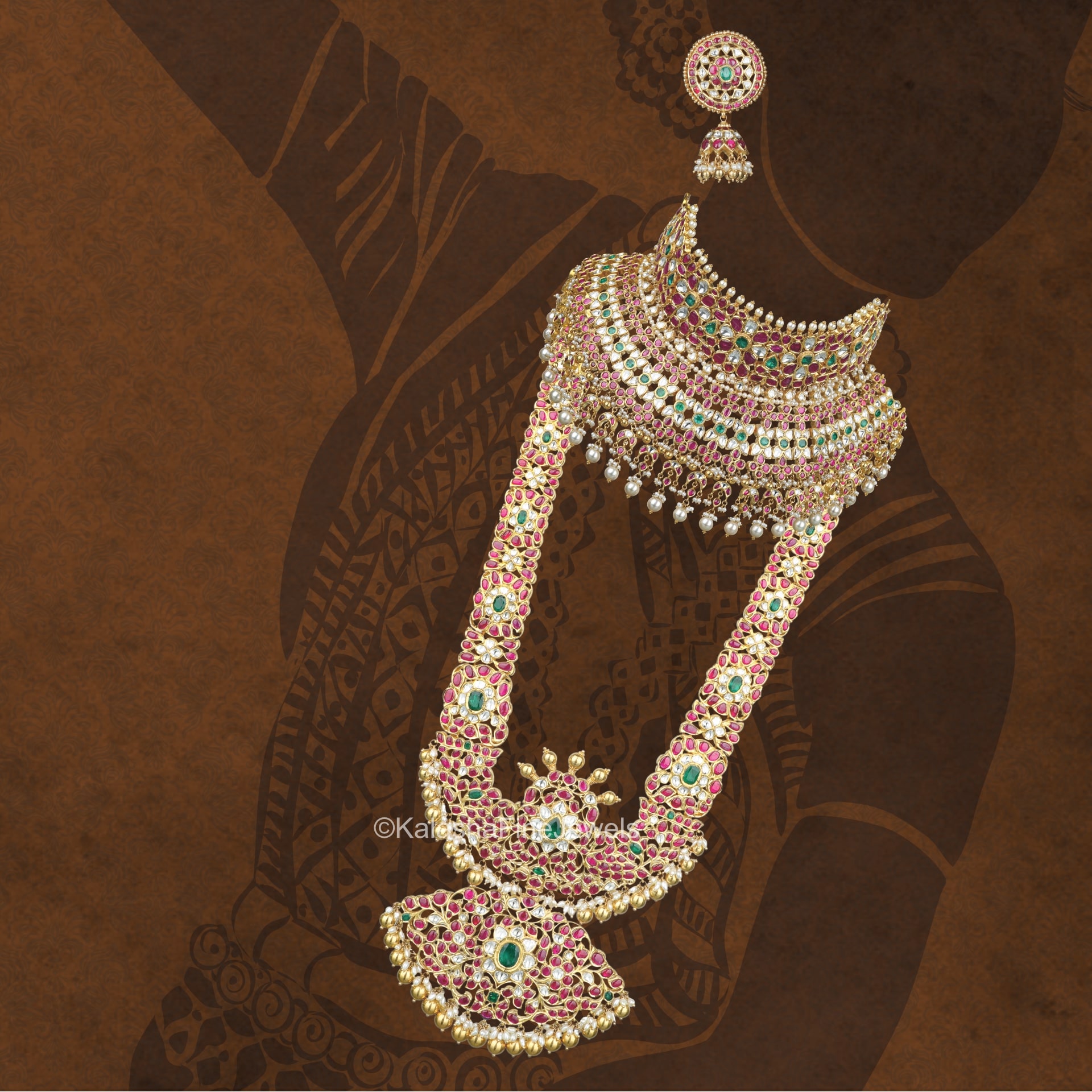
THE TREASURED CRAFT – Nakshi Art
The Nakshi jewellery dates back centuries. Historians profess that its origin is in the Chola dynasty, way back in the 9th century. Traditionally, “Nakshi” in Hindi means carving and Nagas in Tamil means intricate/ornamental work. Nagas/Nakshi jewellery is a part of temple designs and originates from Southern India and have existed from ancient time through the 21st century. It is an art of the highest level as the artists sculpt a simple sheet of gold into Gods, Goddesses and Fairies & Mythical creatures. Nakshi Jewelleries are unique as no two pieces turn out alike, this means the Nakshi/Nagas Jewellery that you own (or will own) is “Totally unique, Totally you”.

The Artistry of Great Precision – Jadau
It is said that making Jadau jewellery using diamonds (Kundan and Polki work) was the original handicraft of Bikaner. Also, it is the oldest handwork jewellery practised there since the time of the Mughals. Bikaner has the distinction of being the only place where Jadau work can be done on 24-carat gold. Jadau was worn by royalty and the Mughals, and this craft was patronized by a lot of Maharajas and Maharanis in Rajasthan. Polki jewellery is made using gold foil, which has intricate designs at the back. The uncut diamonds are then secured in these gold foils. Polki jewellery is therefore timeless and a classic style of Indian jewellery, making it a good investment that is often passed down as heirlooms within families.

The Ancient Purity – Kundan
The word Kundan literally means highly refined gold, and actually, they really do use highly refined pure gold to produce this kind of jewellery. Kundan is a form of jewellery made from gold, usually with a core of wax. The term ‘Kundan’ itself means highly refined pure gold, and this type of jewellery generally involves 24k pure gold. Kundan jewellery holds credit as one of the oldest forms of jewellery in India with a rich legacy of over 2,500 years. Since 24 karats are a little softer, a complete jewellery piece cannot be made from it—only the jadayi part is done in 24 karats, which is ultimately known as Kundan. The art of making Kundan is also known as Jadau jewellery.
